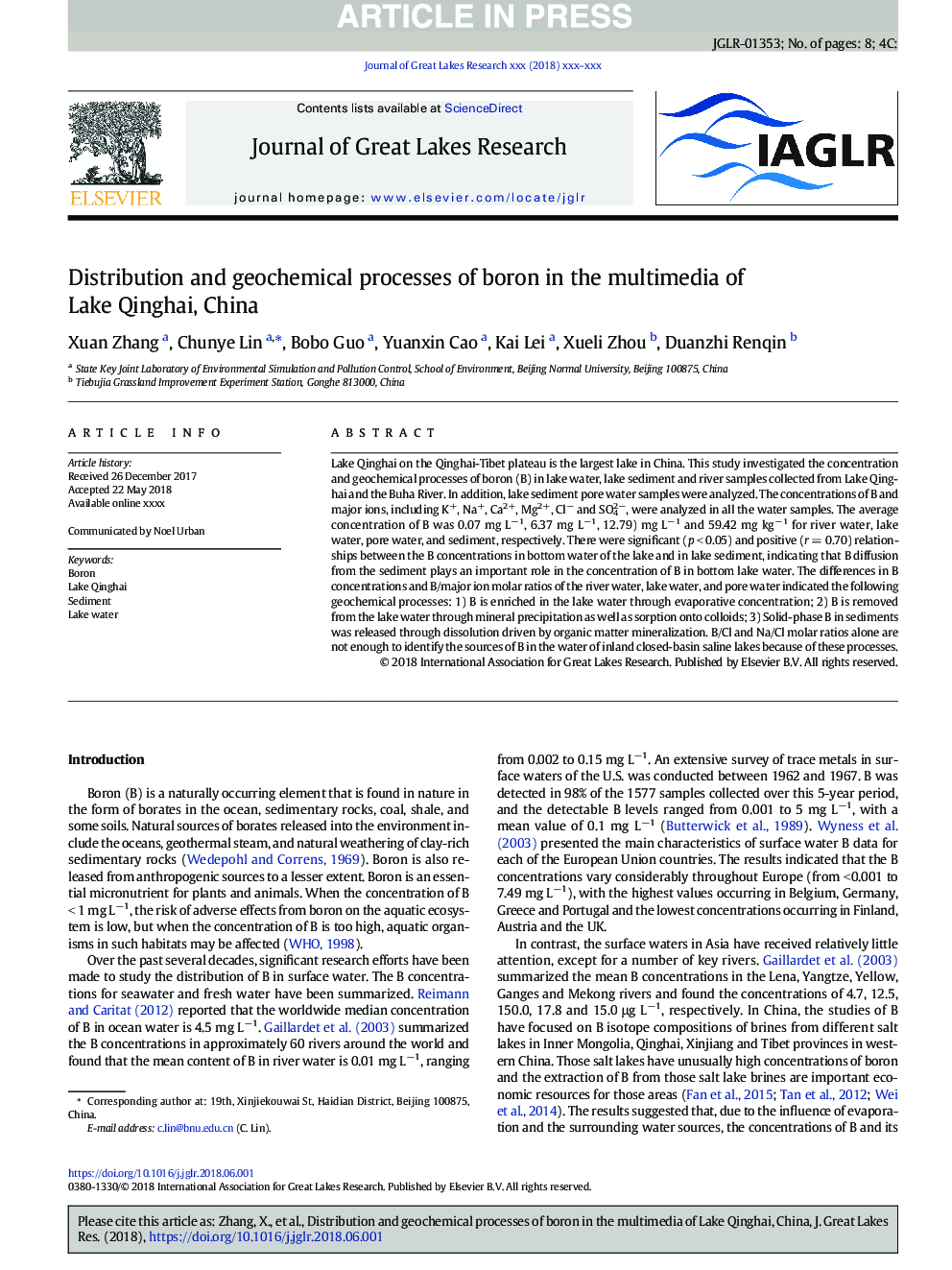| Article ID | Journal | Published Year | Pages | File Type |
|---|---|---|---|---|
| 11010250 | Journal of Great Lakes Research | 2018 | 8 Pages |
Abstract
Lake Qinghai on the Qinghai-Tibet plateau is the largest lake in China. This study investigated the concentration and geochemical processes of boron (B) in lake water, lake sediment and river samples collected from Lake Qinghai and the Buha River. In addition, lake sediment pore water samples were analyzed. The concentrations of B and major ions, including K+, Na+, Ca2+, Mg2+, Clâ and SO42â, were analyzed in all the water samples. The average concentration of B was 0.07â¯mgâ¯Lâ1, 6.37â¯mgâ¯Lâ1, 12.79) mgâ¯Lâ1 and 59.42â¯mgâ¯kgâ1 for river water, lake water, pore water, and sediment, respectively. There were significant (pâ¯<â¯0.05) and positive (râ¯=â¯0.70) relationships between the B concentrations in bottom water of the lake and in lake sediment, indicating that B diffusion from the sediment plays an important role in the concentration of B in bottom lake water. The differences in B concentrations and B/major ion molar ratios of the river water, lake water, and pore water indicated the following geochemical processes: 1) B is enriched in the lake water through evaporative concentration; 2) B is removed from the lake water through mineral precipitation as well as sorption onto colloids; 3) Solid-phase B in sediments was released through dissolution driven by organic matter mineralization. B/Cl and Na/Cl molar ratios alone are not enough to identify the sources of B in the water of inland closed-basin saline lakes because of these processes.
Keywords
Related Topics
Physical Sciences and Engineering
Earth and Planetary Sciences
Earth and Planetary Sciences (General)
Authors
Xuan Zhang, Chunye Lin, Bobo Guo, Yuanxin Cao, Kai Lei, Xueli Zhou, Duanzhi Renqin,
